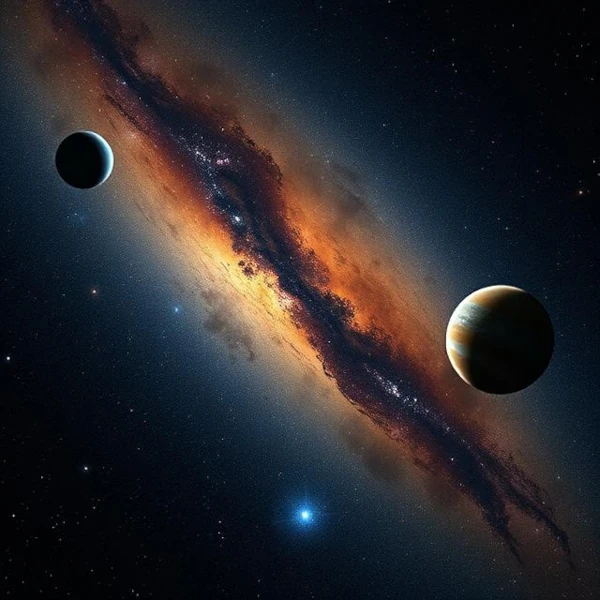
The spectacular advances of the Kepler, TESS, and Gaia missions have profoundly transformed our understanding of the Milky Way. Thanks to these space observatories, we now know that exoplanets are the rule, not the exception. Statistically, each star has on average at least one planet. And among these billions of planets, a significant fraction seems to have the physical conditions necessary for the emergence of life: Earth-like mass, orbit in the habitable zone, rocky composition, etc.
The most conservative estimates, based on Kepler data, suggest that about 1 in 5 Sun-like stars could host an Earth-like planet in its habitable zone. Since our galaxy contains more than \(10^{11}\) stars, this potentially implies more than 20 billion Earths! Rocky planets, comparable in size to ours, orbiting at the right distance to allow liquid water to exist.
Habitability is a complex physicochemical concept. It is not limited to the presence of liquid water but also implies a stable atmosphere, a protective magnetic field, geological activity, chemical cycles, and long-term orbital stability. These are factors that our current instruments are just beginning to probe.
The direct observation of these worlds remains a monumental challenge. But the James Webb Space Telescope, as well as future projects like LUVOIR or HabEx, may open an era of fine astrospectroscopy, allowing the detection of biospheric signatures in the atmospheres of exoplanets. The famous "marker gases," such as oxygen \((O_2)\), ozone \((O_3)\), or methane \((CH_4)\), could indicate biological activity.
If life could emerge quickly on Earth after its formation, it is then plausible, even statistically probable, that it appeared elsewhere. Thus, the idea of a Milky Way teeming with habitable worlds is no longer science fiction, but a rational scientific paradigm, based on solid observational data and advanced astrophysical modeling.
Biology is not independent of physics: it is the environment that guides the evolution of life forms. Darwinism is based on the natural selection of local adaptations. Now, if the environment changes, so do the evolutionary pressures. On another planet, with different constraints—gravity, temperature, atmosphere, starlight, tectonics, presence of the Moon, etc.—evolution will necessarily lead to radically different forms, perhaps incompatible with our biochemistry.
It is therefore highly unlikely that humanoids, trees, or fish like those on Earth would develop elsewhere. Extraterrestrial life may exist, but it will be alien, exotic, and shaped by its own physicochemical framework. This is a direct consequence of environmental determinism in evolutionary biology.